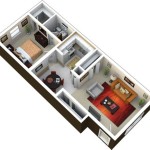Cosy House Plans: Creating a Warm and Inviting Home
The concept of a cozy home resonates deeply with individuals seeking refuge and comfort from the outside world. A cosy house plans prioritize warmth, intimacy, and a sense of well-being. Achieving this ambiance involves careful consideration of architectural design, interior elements, and the overall atmosphere the space intends to evoke. This article examines key components of creating a warm and inviting home through effective house planning.
Maximizing Natural Light and Strategic Lighting
Natural light is a fundamental element in creating a welcoming environment. The architectural design should incorporate large windows, skylights, and strategically positioned doors to allow ample sunlight to penetrate the interior spaces. The orientation of the house is crucial; maximizing southern exposure in colder climates can passively heat the home during winter months, reducing reliance on artificial heating systems and contributing to a more sustainable and comfortable living environment.
The placement of windows must also consider privacy and the surrounding landscape. Carefully framing views of nature can enhance the connection to the outdoors, fostering a sense of tranquility and spaciousness even within a smaller footprint. Window treatments, such as sheer curtains or blinds, can regulate the amount of light entering the home, preventing glare and maintaining a comfortable level of illumination throughout the day. Reflective surfaces, such as mirrors strategically placed near windows, can further amplify natural light, brightening darker corners and creating a more open and airy feel.
Artificial lighting plays an equally important role in achieving a cozy atmosphere, especially during evenings and in areas with limited natural light. A layered lighting approach is recommended, incorporating ambient, task, and accent lighting to create depth and visual interest. Ambient lighting, such as recessed lighting or chandeliers, provides general illumination for the space. Task lighting, such as desk lamps or under-cabinet lighting, focuses light on specific areas for activities like reading, cooking, or working. Accent lighting, such as spotlights or wall sconces, highlights architectural features, artwork, or decorative elements, adding character and warmth to the room.
Warm-toned light bulbs are essential for creating a cozy ambiance. These bulbs emit a soft, inviting glow that simulates the warmth of natural sunlight, promoting relaxation and creating a sense of intimacy. Dimmable switches allow for adjusting the intensity of the light to match the mood and activity, providing flexibility and control over the overall atmosphere. Incorporating light fixtures with textured shades or diffusers can soften the light and prevent harsh glare, further enhancing the feeling of comfort and coziness. Consideration of energy-efficient lighting options, such as LED bulbs, can contribute to a sustainable and cost-effective lighting plan.
Incorporating Warm Materials and Textures
The selection of materials and textures significantly impacts the overall warmth and invitingness of a home. Natural materials, such as wood, stone, and brick, evoke a sense of connection to nature and create a grounding effect. Incorporating these materials into the architectural design, such as exposed beams, stone fireplaces, or hardwood flooring, adds character and visual interest to the space. Wood, in particular, is a versatile material that can be used in various applications, from structural elements to decorative accents, contributing to a warm and inviting atmosphere.
Textiles play a crucial role in adding softness and comfort to a home. Plush rugs, cozy blankets, and textured throw pillows invite tactile interaction and create a sense of relaxation. Layering different textures, such as combining velvet, linen, and wool, adds depth and visual interest to the space. Rich, warm colors, such as earthy tones, muted blues, and deep reds, can enhance the feeling of warmth and coziness. Consider using natural fibers, such as cotton, linen, and wool, for upholstery and window treatments, as they are breathable, durable, and contribute to a healthy indoor environment.
The incorporation of tactile elements extends beyond textiles to include other materials, such as textured wallpaper, woven baskets, and handcrafted pottery. These elements add visual interest and invite touch, creating a multi-sensory experience that enhances the feeling of comfort and well-being. Using reclaimed or repurposed materials can add character and history to the home, creating a unique and personalized space. Consider incorporating antique furniture or vintage accessories to add a sense of charm and nostalgia.
The choice of flooring materials significantly impacts the overall warmth and comfort of a home. Hardwood flooring is a classic choice that adds warmth and elegance to any space. Area rugs can be used to define different zones within a room and add softness underfoot. Carpet is another option that provides warmth and sound absorption, making it ideal for bedrooms and living rooms. Consider using radiant floor heating in colder climates to provide consistent and comfortable warmth throughout the home. Natural stone flooring, such as slate or travertine, can add a touch of luxury and elegance, but may require additional insulation to prevent heat loss.
Designing for Intimacy and Connection
A cozy home is not only visually appealing but also fosters a sense of intimacy and connection. The architectural design should prioritize creating smaller, more intimate spaces within the larger structure. Nooks, reading corners, and window seats offer opportunities for quiet contemplation and relaxation. Incorporating comfortable seating arrangements that encourage conversation and interaction can enhance the sense of connection within the home.
The layout of the home should facilitate both togetherness and privacy. Open-concept living areas can promote social interaction, while separate bedrooms and home offices provide space for individual activities and relaxation. A well-designed floor plan should allow for seamless transitions between different zones within the home, creating a sense of flow and cohesion. Consider incorporating a mudroom or entryway to create a buffer zone between the outside world and the interior spaces of the home, keeping the living areas clean and organized.
The creation of a focal point within each room can draw the eye and create a sense of balance and harmony. A fireplace, a large window with a stunning view, or a piece of artwork can serve as a focal point, anchoring the space and creating a sense of visual interest. Decorating with personal items, such as family photos, travel souvenirs, and cherished objects, can add character and personality to the home, making it feel more lived-in and inviting.
Incorporating elements of nature into the home can enhance the feeling of connection to the outdoors and promote a sense of well-being. Indoor plants can purify the air, add visual interest, and create a sense of tranquility. Consider creating a small indoor garden or herb garden to bring the beauty of nature indoors. Opening windows and doors to allow fresh air to circulate throughout the home can also enhance the feeling of connection to the outdoors. The sound of running water, such as from a small fountain, can create a calming and relaxing atmosphere.
A well-designed cosy house plans involves careful consideration of several factors, including natural and artificial lighting, the selection of materials and textures, and the overall layout of the home. By prioritizing warmth, intimacy, and a connection to nature, it is possible to create a home that is both visually appealing and emotionally fulfilling.

How To Create A Warm And Inviting Home Improvement

20 Tips For Creating Cozy Home Interiors

Cozy Home Interior Ideas A Guide To Comfy Warmth This Winter Decorilla Online Design

5 Design Tricks To Make Your Home Feel More Warm And Cozy

Warm Modern House Plans Blog Dreamhomesource Com

Make Your Home Into A Cozy Winter Sanctuary Expert Tips Woodka Interiors

How To Keep A Home Warm And Chic This Winter

Warm Modern House Plans Blog Dreamhomesource Com

Create A Cozy Comfortable And Inviting Atmosphere In Your Home Har Com

Creating A Cozy Home Warm Interior Design Tips Page 2 Galaxy Designers
Related Posts








